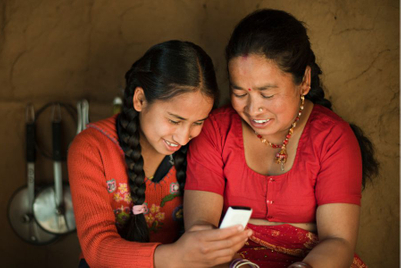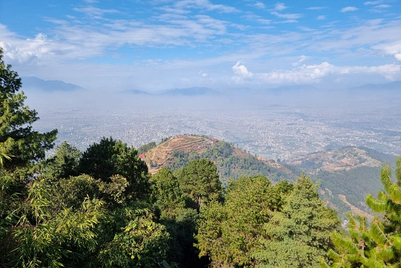
Haat Bazaar is a general term for a weekly market organized in a rural society. Generally held on a playground or an open fieldthey help local farmers earn supplemental income by selling surplus agricultural products or trading for other goods. Over 65 per cent of the Nepalese population still directly depends on small-scale agriculture for its livelihood.
Traditionally, haat bazaar was generally practiced in the rural plain areas, especially in the Terai region—the southern part of Nepal, closer to neighboring India, which is the country's most densely populated region. This part of Nepal is also agriculturally more fertile and works as a feeder market for people residing in the hilly and the Himalayan regions. In recent years, haat bazaar has gained popularity, and the practice has spread to semi-urban areas of hilly towns.
According to 2011 government census data, more than 80 percent of Nepal's population resides in rural areas, representing a huge potential consumer population for most companies. With urban markets getting saturated for several categories of consumer goods, the lure of rural Nepal has been the subject of animated discussion in corporate sectors in the recent times. Marketers are fanning out and discovering the strengths of these larger rural markets as they try to broaden their markets. At this same juncture, we are also seeing rising rural incomes due to higher agricultural prices.
In addition, remittance-based incomes are driving higher consumption amongst these rural folks. There are certain villages in Nepal where you will see at least one person from the family working outside Nepal. This kind of international exposure to a member of a family also drives household aspiration to use well-known consumer brands or interest in altogether new product categories.
Some companies have already started to venture into rural Nepal, identifying enticing growth potential. One of their major challenges is to drive awareness for their brand and educate people about proper use. For the majority of rural folks, these product categories are unknown, so it is a big challenge for major brands to first educate them. On top of that it is also difficult to reach these rural populations via traditional media. Even if there is some spillover of the urban message, it might not make sense to these rural folks because they are mostly in the introduction phase of the product lifecycle, where the communication agenda is different.
Given these factors, some companies have found haat bazaar to be their best solution to communicate and educate consumers. For example: Unilever Nepal is using haat bazaar as a platform for upgrading soap users in these villages to shampoo users by giving them a proper salon experience at the haat market. Similarly No.1 telecom brand Ncell has been successfully creating awareness with rural customers by teaching villagers how to use mobile phones. This is done through the company's mobile-on-wheels program, which stops at high-footfall areas like haat bazaars.
The social sector in Nepal has also found success using haat bazaar to give behavior-change messages. These social organizations are using local artists, dancers and magicians to spread awareness of their socially relevant messages in a manner rural people can relate to. For example, they have used street dramas and puppet shows to entertain, educate and in a subtle way convey behavior-change messages on child labor, child nutrition, health and education.
The haat bazaar platform is becoming more and more popular amongst companies and brands to get hold of these rural folks and create awareness and educate them. But companies also need to understand that their brands and products have to be adapted to rural needs and it should connect to their day to day lives by making some difference in their living if the business has to sustain in the longer run.
A haat bazaar in Nepal:
A puppet show executed by Outreach Nepal on the topic of child domestic workers:
A street drama executed by Outreach Nepal promoting prevention and containment of the H5N1 virus (Avian Influenza:
Ujaya Shakya is the managing director of Outreach Nepal. He is a communication entrepreneur, speaker and brand evangelist. You can tweet him your comments at @shakyau or reach him at [email protected]






+(900+x+600+px)+(3).png&h=334&w=500&q=100&v=20250320&c=1)

.jpg&h=334&w=500&q=100&v=20250320&c=1)




+(900+x+600+px).jpg&h=334&w=500&q=100&v=20250320&c=1)
.jpg&h=334&w=500&q=100&v=20250320&c=1)





.jpg&h=268&w=401&q=100&v=20250320&c=1)


